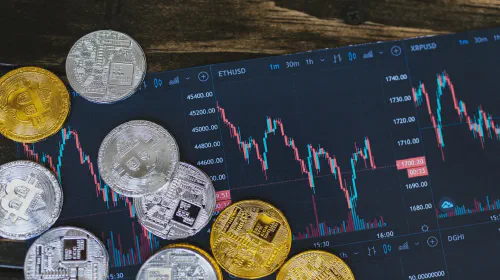The Impact of Digital Payments on Retail
Salomon Kisters
Jun 14, 2023This post may contain affiliate links. If you use these links to buy something we may earn a commission. Thanks!
The world is moving towards a cashless society. Digital payments have become the norm and have had a significant impact on the retail industry. The convenience and speed associated with digital payments have made them an attractive option for both consumers and retailers. The days of standing in long queues to make a payment or carrying large amounts of cash are fast disappearing.
The rise of digital payments has also led to the emergence of new payment technologies and applications. From mobile payment systems to wearable technology, consumers now have a wide range of options to choose from. The adoption of these technologies has enabled retailers to streamline their payment processes, reduce operational costs and improve customer experience.
However, the impact of digital payments on retail is not all positive. The rise of e-commerce platforms has intensified competition, forcing traditional brick-and-mortar retailers to adapt to changing consumer behaviors. Retailers that fail to embrace digital payment technologies risk losing out on customers who value convenience and speed.
As the world continues to move towards a cashless society, the retail industry must continue to evolve to meet the needs of consumers. In this blog post, we will explore the impact of digital payments on retail and discuss the trends shaping the industry.
The Rise of Digital Payment Methods in Retail
Digital payment methods have changed the face of the retail industry. With the increasing popularity of digital payments, retailers are investing in cashless payment systems to provide faster checkouts, reduce wait times, and enhance customer experiences.
The emergence of digital payment platforms such as mobile wallets and contactless payment has meant that customers can make transactions without the need for physical cash. This has transformed the way payments are made in retail, attracting tech-savvy customers who prefer convenience over traditional payment methods.
In addition, digital payment methods offer a safe and secure way of making transactions, reducing the risk of potential theft and fraud. As a result, customers and retailers are embracing digital payments, leading to an increase in their adoption.
Moreover, digital payments have enabled retailers to reduce the cost and time associated with handling cash, such as counting, reconciling, and depositing. This has improved operational efficiency, allowing retailers to allocate resources to other areas of business.
The rise of digital payment methods has also forced retailers to adapt to changing consumer behaviors. Retailers that fail to embrace digital payments risk losing customers to competitors who offer better payment options. As a result, retailers are continuously exploring new digital payment technologies and platforms to stay ahead of the game.
Improved Customer Experience and Convenience with Digital Payments
Digital payments offer unmatched convenience and simplicity, enhancing the overall customer experience. Customers no longer have to carry bulky wallets or worry about insufficient cash while shopping. Instead, they can make quick and secure payments using their mobile devices, computer, or cards.
Digital payments have also enabled retailers to create an omnichannel experience, allowing customers to shop from any device or platform. For example, a customer can browse online and make a purchase in-store, or vice versa, seamlessly. This has resulted in more satisfied customers and improved customer loyalty.
Furthermore, digital payments offer greater flexibility in terms of payment options. Customers can choose from a variety of payment methods depending on their preference, such as credit cards, debit cards, mobile wallets, and payment gateways. This has made shopping a hassle-free experience, boosting customer satisfaction levels.
Another benefit of digital payments is the elimination of waiting times. Long queues and checkout times are a turn-off for customers, but digital payment methods have enabled retailers to process transactions quickly and efficiently. This ensures a smooth and hassle-free checkout process, augmenting the in-store customer experience.
Enhanced Security and Fraud Reduction with Digital Payments
Digital payments provide enhanced security compared to traditional payment methods, reducing the risk of fraud and cybercrime. With digital payments, customers can rest assured that their sensitive information, such as credit card details, is secure. The transactions are encrypted and processed through secure channels, making it nearly impossible for fraudsters to intercept the information.
Moreover, digital payments also provide retailers with better fraud management tools. With fraud detection technologies and machine learning algorithms, retailers can detect and prevent fraudulent transactions in real-time. This, in turn, protects both the retailer and the customer from financial fraud, chargebacks, and other forms of online scams.
Another advantage of digital payments is the ability to store customer information securely in one place. This not only makes the checkout process faster but also reduces the likelihood of data breaches. Digital wallets, for instance, can store important information such as credit card details in one secure place, reducing the need for customers to input this information repeatedly on different platforms.
In addition, digital payments also offer protection against unauthorized transactions. Many digital payment platforms provide zero-liability guarantees to customers, meaning that they won’t have to bear any financial burden if an unauthorized transaction takes place. This guarantee provides customers with peace of mind and helps to build trust between the retailer and the customer.
How Digital Payments are Changing the Way Retailers Conduct Business
With the rise of digital payments, retailers are finding themselves in a more competitive market, where ease of payment, convenience, and security are paramount. Digital payments not only provide customers with a seamless checkout experience but also offer retailers an opportunity to optimize their operations.
One way that digital payments are changing the way retailers conduct business is by increasing efficiency. Traditional payment methods such as cash and check require a lot of time and resources to process, verify and deposit, while with digital payments, transactions are processed immediately, reducing processing time.
Moreover, digital payments allow retailers to streamline accounting and bookkeeping processes, as digital records can be easily traced, monitored, and reconciled. This not only saves time but also ensures accuracy and helps retailers to avoid financial errors.
In addition, digital payments provide a wealth of data that retailers can use to optimize their operations. Digital transaction data can provide insights into customer behavior, such as spending habits and preferences, allowing retailers to tailor their marketing strategies based on that information.
Furthermore, digital payments can also help retailers to expand their customer base by accepting payments from customers who otherwise would not have been able to purchase from them. Digital payments can be made from anywhere in the world and 24/7, making it easier for retailers to cater to a global audience.
Finally, digital payments also offer a more seamless checkout experience, increasing customer satisfaction and reducing cart abandonment rates. With digital payments, customers no longer need to input their payment and shipping information manually, reducing friction and improving the overall shopping experience.
The Future of Retail with Digital Payments
The impact of digital payments on retail has been significant, and it is clear that this trend will continue well into the future. With the advancement of technology and the increasing demand for fast and convenient payment options, retailers are embracing digital payments to stay competitive.
One of the most significant trends that we can expect to see in the future is the integration of digital payments with other technologies, such as virtual reality and augmented reality. These technologies will enable retailers to provide a more immersive and personalized shopping experience to their customers, with digital payments seamlessly integrated into the process.
Another trend that is likely to emerge is the use of biometric authentication for digital payments. With the rise of mobile payments and wearables, biometric authentication offers a more secure and convenient way to verify identity and authorize transactions. This technology has already been adopted by some retailers, and we can expect to see its use become more widespread in the coming years.
Furthermore, we can expect to see more retailers embracing cryptocurrency and blockchain technology for digital payments. Cryptocurrencies like Bitcoin and Ethereum offer a more secure and decentralized payment option, while blockchain technology offers greater transparency and accountability for transactions. As more consumers become interested in using cryptocurrency for payments, retailers will need to adapt to meet this demand.
Finally, we can expect continued innovation in the payment industry, with new technologies and payment options emerging on a regular basis. Retailers who keep up with these trends and adopt the latest payment technologies will be better positioned to provide their customers with a seamless and convenient shopping experience and stay ahead in an increasingly competitive marketplace.
Conclusion
In conclusion, digital payments have had a transformative impact on the retail industry. With the increasing demand for fast, secure, and convenient payment options, retailers who fail to embrace digital payments risk falling behind their competitors.
As we have seen, the integration of digital payments with other technologies such as virtual reality, augmented reality, and biometric authentication offers exciting possibilities for retailers to provide a more personalized and immersive shopping experience for their customers.
Moreover, with the growing popularity of cryptocurrencies and blockchain technology, retailers who adopt these technologies will be better positioned to meet the evolving needs of consumers who are looking for more secure and transparent payment options.
Overall, staying up-to-date with the latest digital payment trends and technologies will be essential for retailers who want to remain competitive in the years to come. By embracing digital payments and providing their customers with a seamless and convenient shopping experience, retailers can drive growth and succeed in an increasingly digital world.
Stay informed with the latest insights in Crypto, Blockchain, and Cyber-Security! Subscribe to our newsletter now to receive exclusive updates, expert analyses, and current developments directly to your inbox. Don't miss the opportunity to expand your knowledge and stay up-to-date.
Love what you're reading? Subscribe for top stories in Crypto, Blockchain, and Cyber-Security. Stay informed with exclusive updates.
Please note that the Content may have been generated with the Help of AI. The editorial content of OriginStamp AG does not constitute a recommendation for investment or purchase advice. In principle, an investment can also lead to a total loss. Therefore, please seek advice before making an investment decision.

What is a Soft Fork? [With Examples]
The process of changing a cryptocurrency blockchain is called forking. There are two kinds of forks: hard and soft. This article will cover the second type in detail with some examples.

Exploring Digital Payment Options for Freelancers: Benefits, Platforms & Best Practices
Learn about the benefits, popular platforms, and how to choose the right digital payment option for freelancers. Secure transactions and best practices included.

How Many Binance Coins Are There and How Many Are Left?
BNB has managed to become the third-most-popular crypto token in the world. But how many Binance coins are there, and how many are left?
Protect your documents
Your gateway to unforgeable data. Imprint the authenticity of your information with our blockchain timestamp